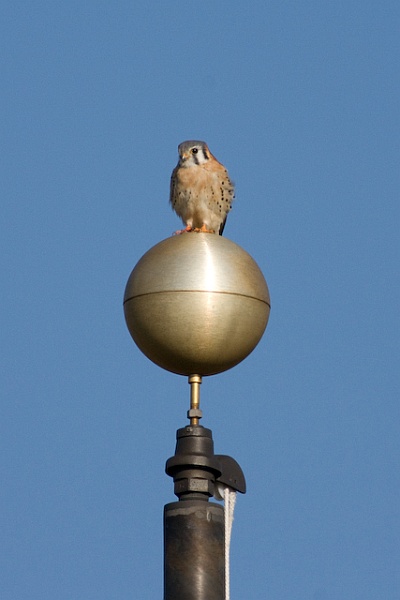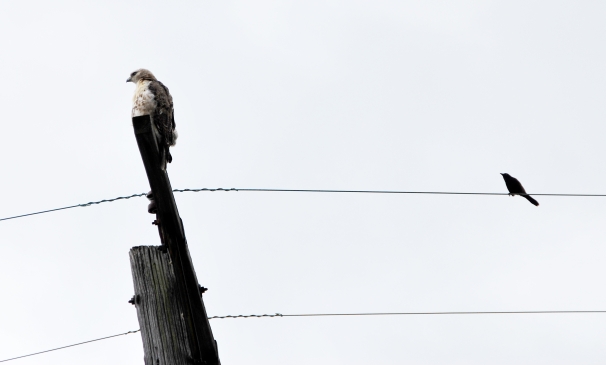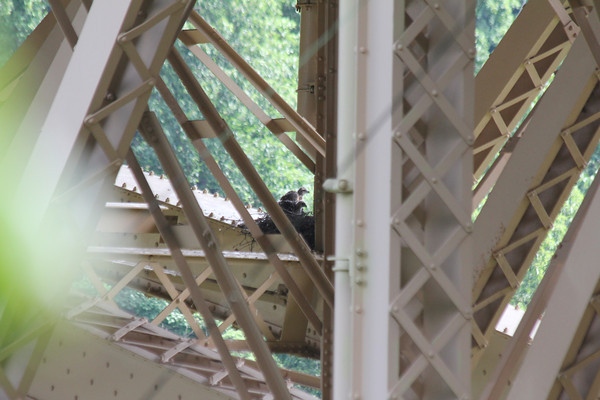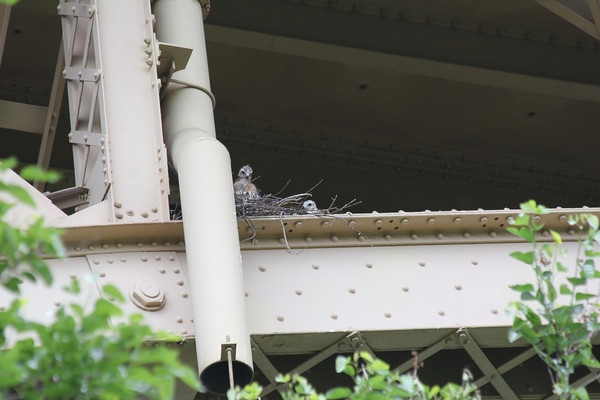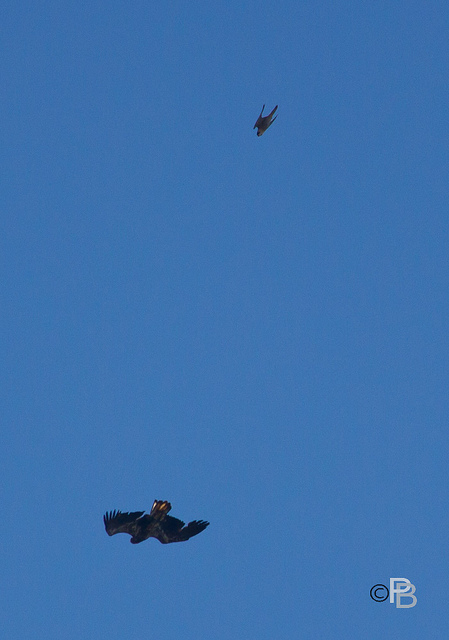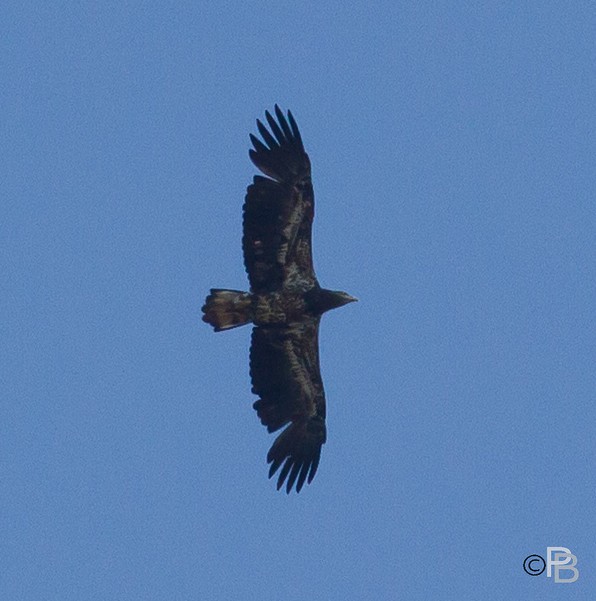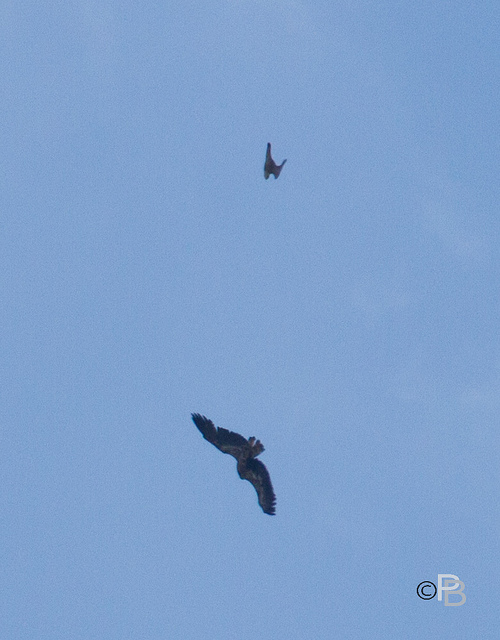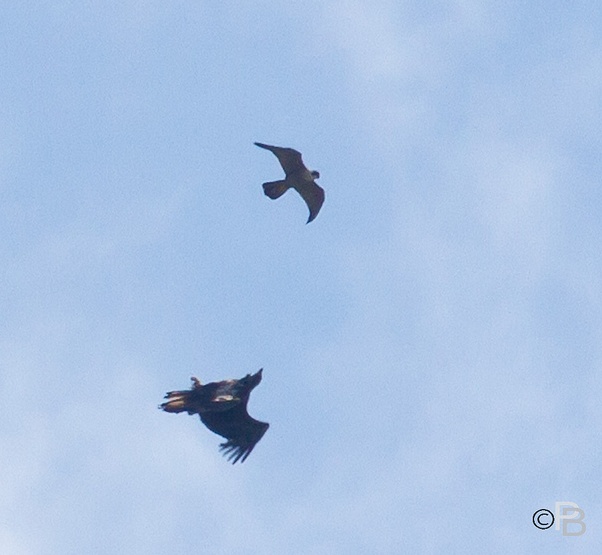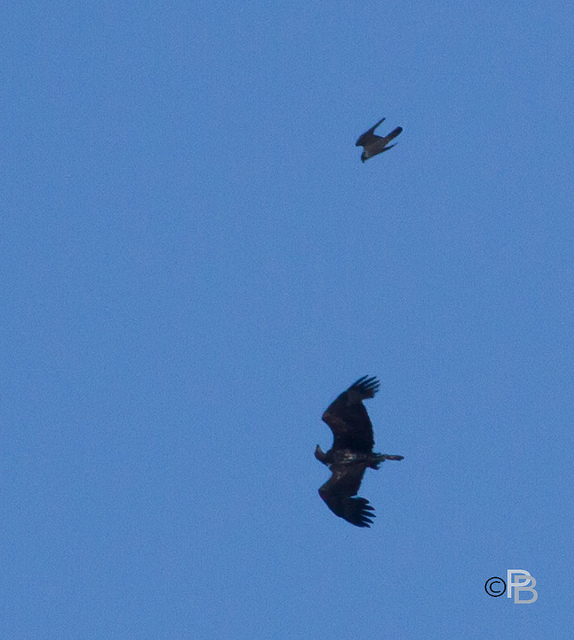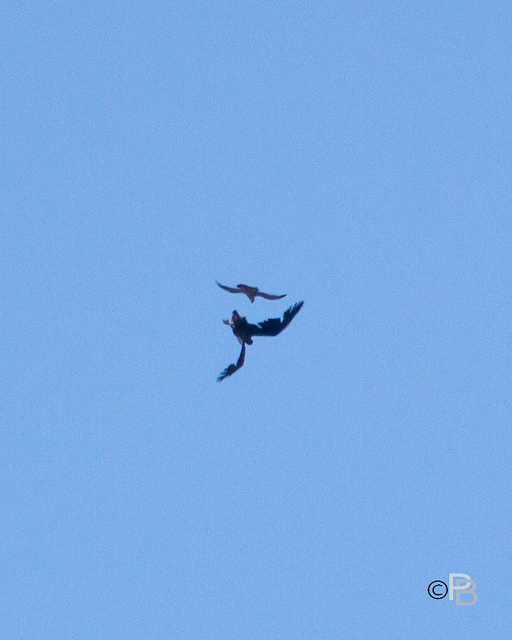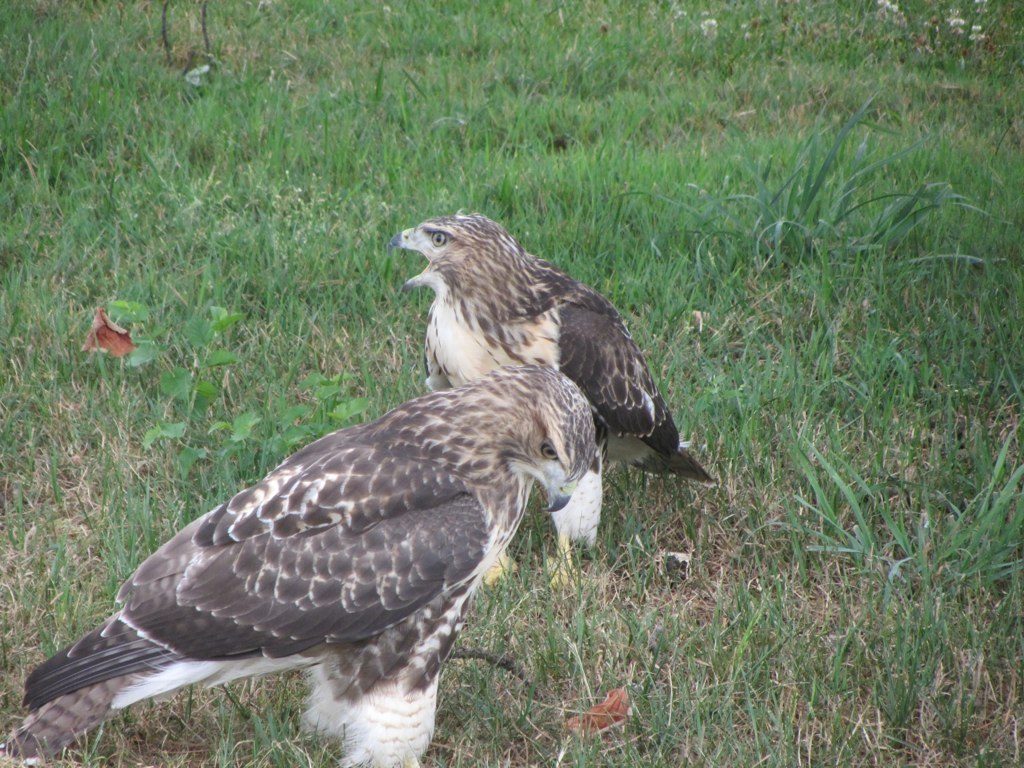
6 August 2012
This spring two red-tailed hawk babies fledged from the Panther Hollow Bridge in Schenley Park. They’re already as big as their parents but they don’t act grown up. They’re not wary of humans and they whine when they’re hungry.
At this stage they’re learning how to capture and kill prey with their feet. They’ve been watching their parents for tips but they always hope their parents will deliver dinner. Meanwhile the adults are waiting longer to feed them, hoping the kids will take the hint: “Feed yourself!”
The two juveniles are often found together because Little Brother, the younger of the two, follows his big sister at meal times in case she catches something.
In mid-July Jim Funderburgh found the two hawks exploring the park on their own. Little Brother whined but his sister had nothing to give him so he found a mouse-size object and practiced his prey techniques.
In the video he clutches to kill it … but it surprises him. Yikes!
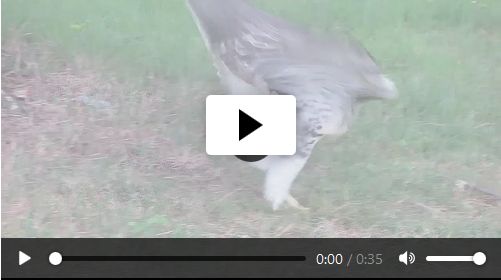
Whatcha got there, Little Brother?
A pinecone!
(photo and video by Jim Funderburgh)
